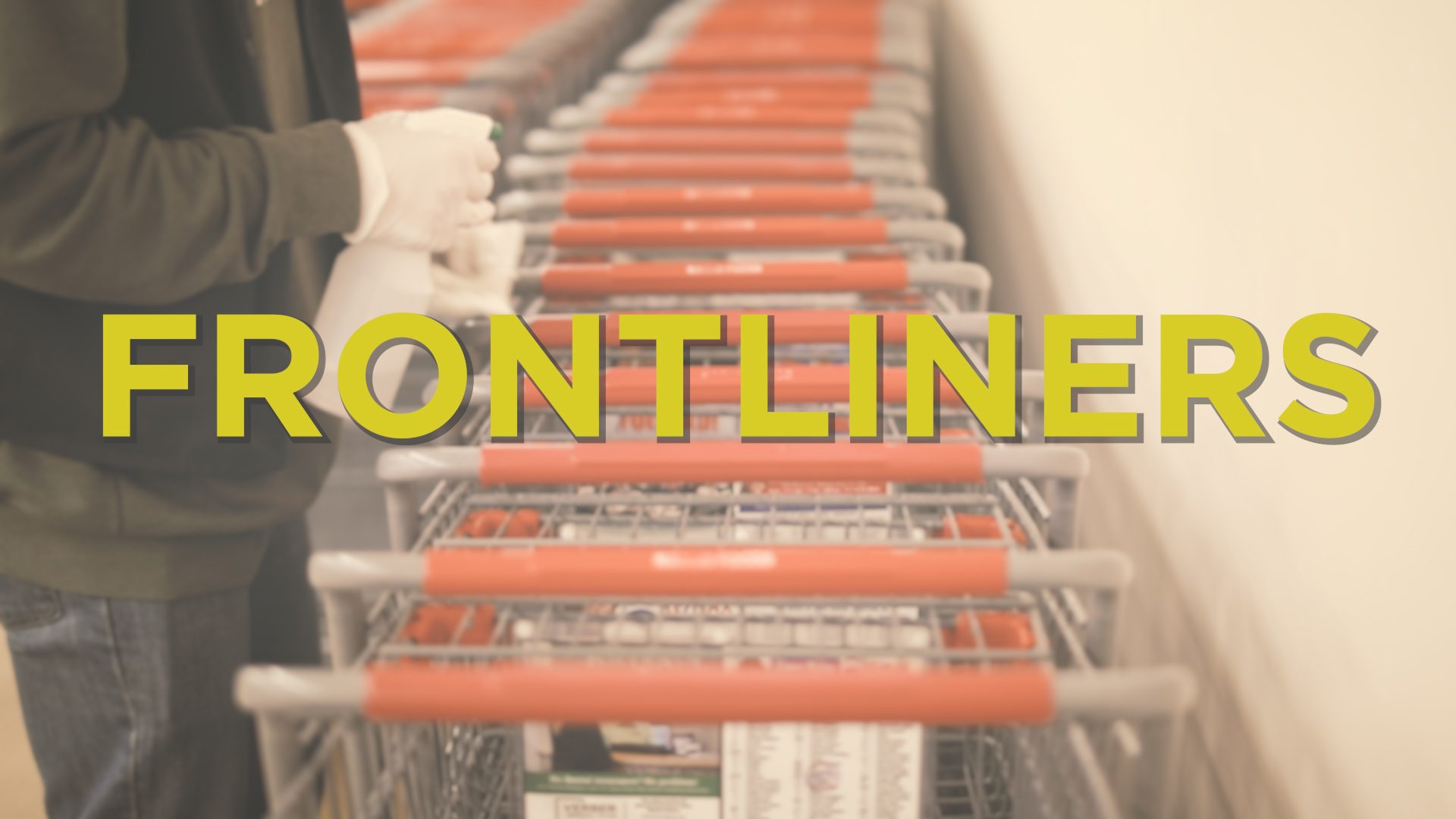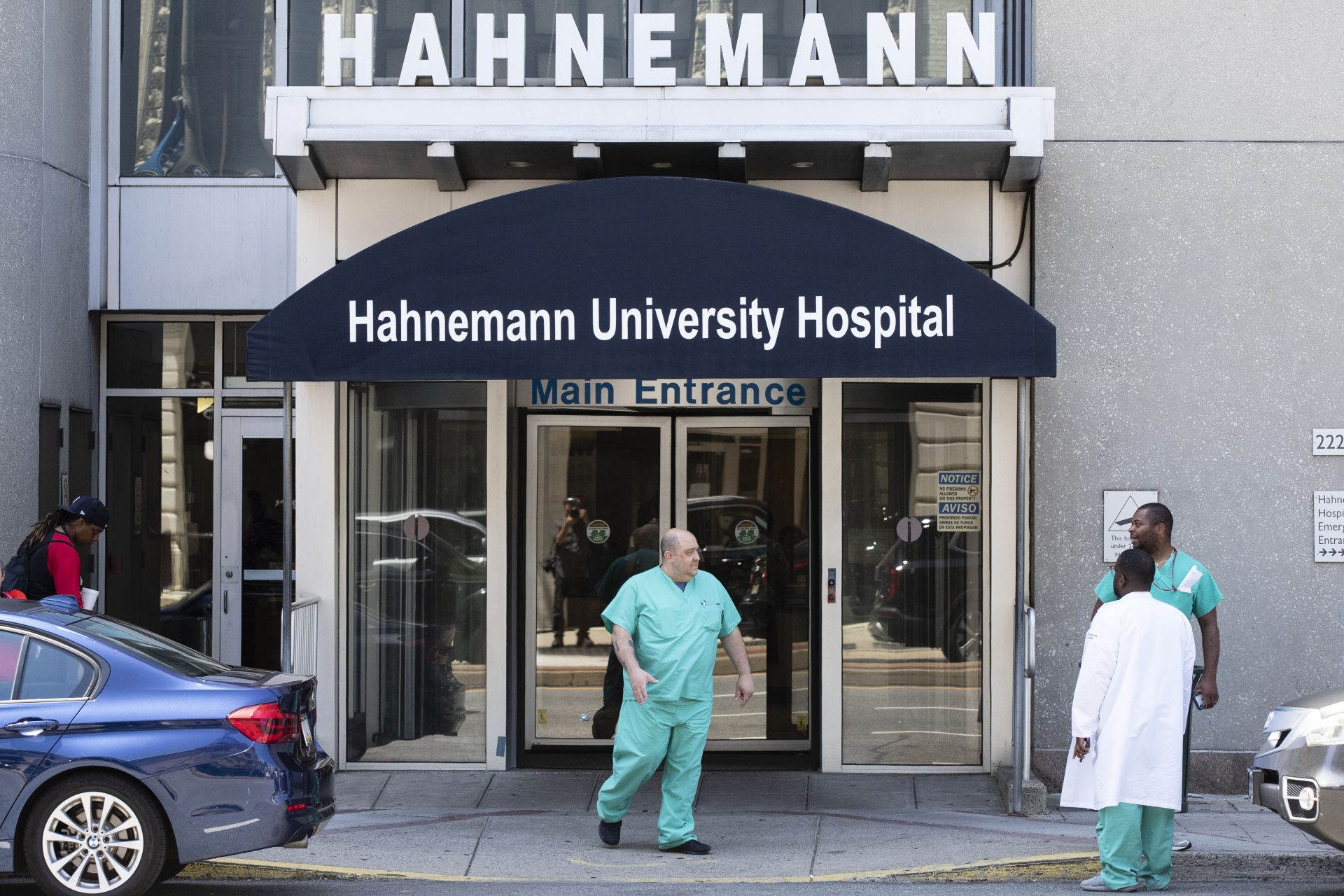
Grocery store workers are on the coronavirus front lines
Our documentary looks at the food system's essential workers
-
Joseph Darius Jaafari


We may not be able to congregate in a movie theater, playhouse or bar these days, but there’s still plenty of close interaction with other humans, especially in grocery stores.
Coronavirus, the medical world says, is more contagious than the flu. The virus can be spread by asymptomatic people through droplets floating in the air. And it can linger on surfaces and items long enough to be transmitted by touch. That’s why we’re bombarded with instructions to wash our hands and stay at least 6 feet away from others.
Based on media coverage from around the country, some grocery workers are anxious. After all, customers in grocery stores touch everything. And employees have to then rearrange or restock those items. We wanted to do a documentary about these workers to offer a glimpse into their lives.
So on March 25 we went into a Karns Quality Foods grocery store in Lemoyne, Pennsylvania, a suburb of Harrisburg. We wanted to follow a few workers and show our audience how these people were staying vigilant to keep the virus from spreading. What we discovered was something much more nuanced – some workers were worried, others not so much.
First, I want to note this documentary is not a story about people doing bad things. Grocery workers are just like us, struggling to keep up with the news about coronavirus while living through the same disruptions affecting the rest of us.
On March 25, we found the workers at one Karns store were still coming to terms with the recommendations coming from health professionals. And that makes sense, considering how quick the news has changed in just the past 10 days. When we were shooting this documentary, the Centers for Disease Control and Prevention recommended that masks only be worn by medical workers and people who were ill with COVID-19 or tested positive for coronavirus. Now, the CDC is encouraging all Americans to wear homemade masks outside the home.
All of that is to say that the virus response is always changing, and people and businesses are doing their best to adapt.
On April 5, the day before we published FRONTLINERS, the CEO of Karns Quality Foods, Scott Karns, reached out to me. He described the changes made in the week-and-a-half since we visited. Karns store managers gave all staff masks to wear (though, it’s only a recommendation to wear them), all employees have gloves available to them, and the stores installed barriers to shield cashiers and customers from breathing on each other. A letter sent to employees also notified them that their wages are being increased by $2.00 an hour during the pandemic – in many cases that’s at least a 20% pay-increase.
Karns said he and his managers are doing everything they can to make sure the staff at their stores keep up with the CDC’s recommendations. “Two weeks ago, things were very different,” he said.
He’s right about that. The big takeaway from FRONTLINERS isn’t that grocery stores are failing to protect us. It’s something more complicated.
At the time we filmed, we knew that we needed to stay a minimum of six feet from the workers we interviewed if we didn’t have a mask on (which we did so we could film close ups). We also knew we needed to wear gloves to avoid touching surfaces. And we needed to constantly wash or sanitize our hands. It wasn’t easy. We slipped up more than a few times.
And to some extent, the employees we witnessed stuck to the gloves and distance rules. While the six-foot rule is a hard one for a produce worker or cashier to follow, most workers we saw dealing with customers wore gloves. But not everyone wore them, and almost no one wore masks. And as many epidemiologists have said, there needs to be uniformity in prevention strategies if we want this social distancing policy to work. –Joseph Darius Jaafari
Related reading:
-
The Atlantic: Grocery Stores Are the Coronavirus Tipping Point
-
The Morning Call: In the coronavirus era, supermarket workers have become our heroes.
-
Also from The Morning Call: Pennsylvania health secretary signs order to keep warehouse and other essential workers safer
Best of the rest

Matt Rourke / AP Photo
A person exits Hahnemann University Hospital in Philadelphia, Wednesday, June 26, 2019. The owner of hospital has announced it will close in September because of what the company calls “continuing, unsustainable financial losses.” (Matt Rourke / AP Photo)
-
Most recent numbers: As of the end of the day Saturday, there were 11,510 positive cases of coronavirus in the state, with 150 deaths, according to the Pa. Department of Health. Of those who tested positive, 42% are between 25-49 years old; 49% are above 50. There have been 66,261 patients who tested negative for the virus. As cases continue to surge, there is a possible antibody and immunity test under development in Pittsburgh, the Post-Gazette reported.
-
Hoarding? Philly resident Joel Freedman has become a target of anger by left-leaning social media users and legislators in the past week. Freedman owns the empty Hahnemann hospital in West Philly and offered to give the city the space for $1 million a month. But while Freedman’s home has been vandalized and egged, Anna Orso for The Inquirer tells a different side of the viral story.
-
Past lessons: How Philadelphia responded (or really, didn’t respond) to the 1918 Pandemic has heavily influenced the way the city and state reacted to the novel coronavirus. For The New York Times, Dan Barry and Caitlin Dickerson take a look at the history of Philadelphia’s role in the century-old flu pandemic using archival news and a visit to the Mutter Museum. From the piece: “Much from that time has the sudden ring of familiarity: the shattering consequence of holding a large public event — a patriotic parade featuring marching bands, Boy Scouts and troops before cheering crowds packed 15 feet deep on the sidewalks — in defiance of scientific advice to stay at home.”
-
A fragile medical system: As EMT workers test positive for the coronavirus and eventually have to self quarantine, their absences will have the dire effect of less medical staff to man ambulances in rural areas. But it’s not just less staff that have ambulance companies worried. The funding system many use to survive is based on Medicaid reimbursements, which cover only a fraction of the costs to treat and transport people. That model isn’t stress-tested in areas that are already short ambulance cars. Wallace McKelvey with PennLive and Spotlight PA has that story.
Must reads:
-
The New Yorker: Watching ESPN During the Coronavirus Lockdown
-
The Marshall Project: A New Tactic To Fight Coronavirus: Send The Homeless From Jails To Hotels
-
Vanity Fair: Is This the End of Influencing as We Knew It?
-
Harper’s Bazaar: Everyone Is Home Right Now, But Who’s Doing All the “Home” Work?
-
The Strategist: I May Not Have Outdoor Space, But I Now Have a Hammock in My Bedroom

